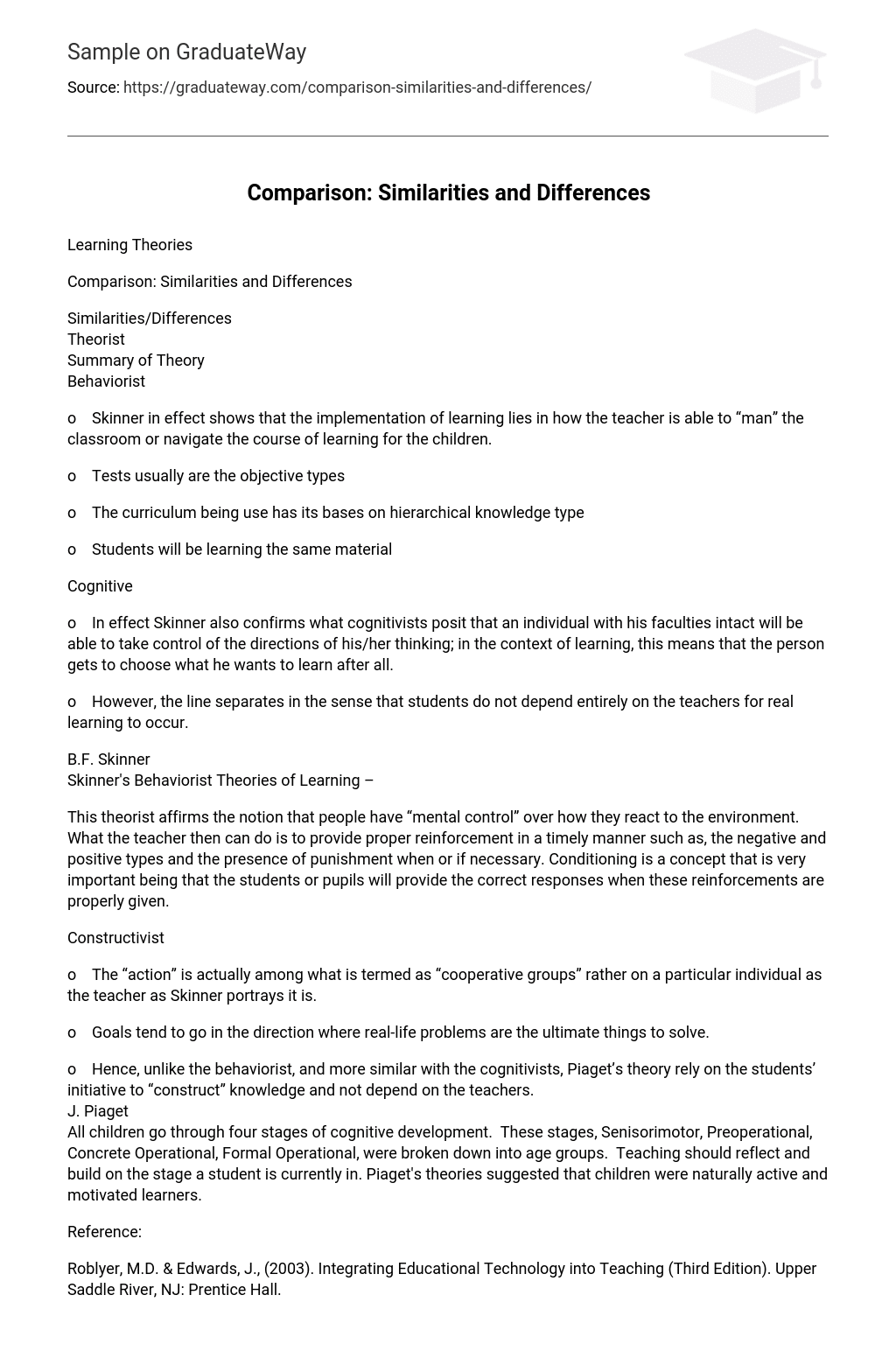Behaviorist.
- Skinner effectively demonstrates that the success of learning depends on how well the teacher manages the classroom and guides the children through their educational journey.
- Tests typically consist of objective questions.
- The curriculum being used is based on a hierarchical knowledge structure.
- All students will be taught the same material.
Cognitive
- Skinner confirms what cognitivists posit, that an individual with intact faculties can take control of their thinking. In the context of learning, this means that the person gets to choose what they want to learn.
- However, the line separates when it comes to students not depending entirely on teachers for real learning to occur.
B.F. Skinner
Skinner’s behaviorist theories of learning affirm the notion that individuals have mental control over how they react to the environment. Teachers can provide proper reinforcement, including negative and positive types, and punishment if necessary. Conditioning is a crucial concept as students will provide correct responses when these reinforcements are properly given.
Constructivist
- The action” is actually a part of what is known as “cooperative groups” rather than focusing solely on the teacher as Skinner portrays.
- Goals are oriented towards solving real-life problems.
- Therefore, unlike behaviorists and more similar to cognitivists, Piaget’s theory relies on students’ initiative to construct knowledge rather than solely depending on teachers.
J. Piaget
All children go through four stages of cognitive development: Sensorimotor, Preoperational, Concrete Operational, and Formal Operational. These stages were broken down into age groups. Teaching should reflect and build on the stage a student is currently in. Piaget’s theories suggest that children are naturally active and motivated learners.
Reference:
- Roblyer, M.D. and Edwards, J. (2003). Integrating Educational Technology into Teaching” (Third Edition). Upper Saddle River, NJ: Prentice Hall.





